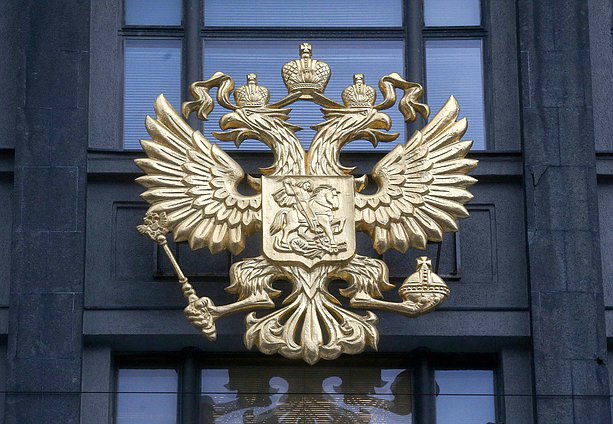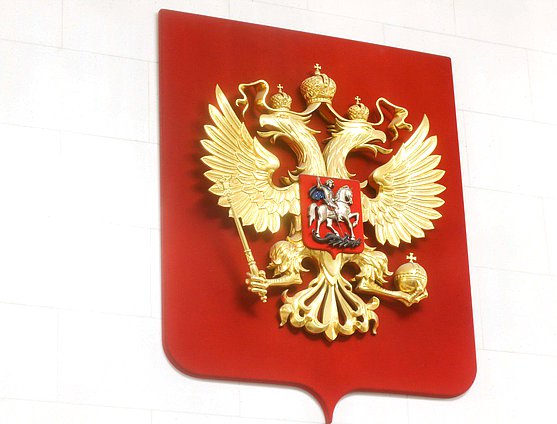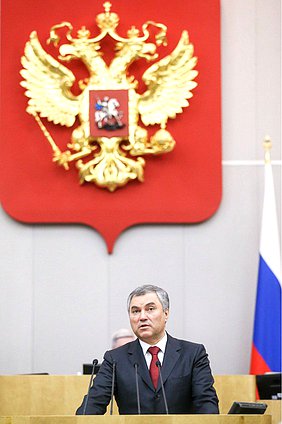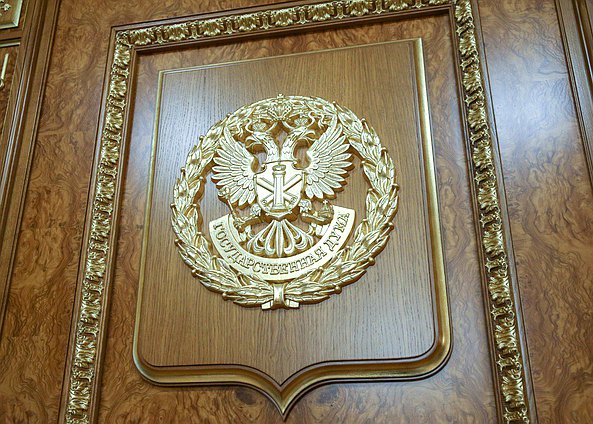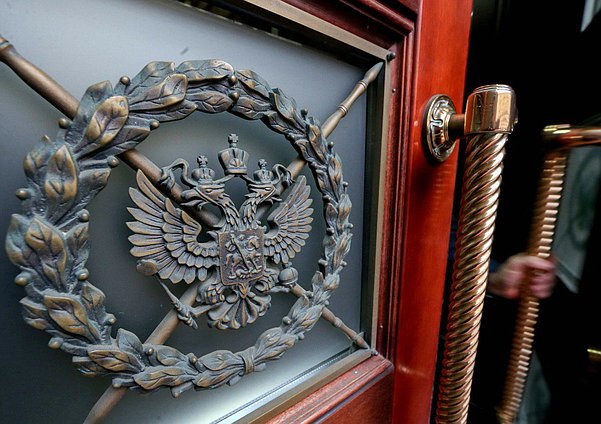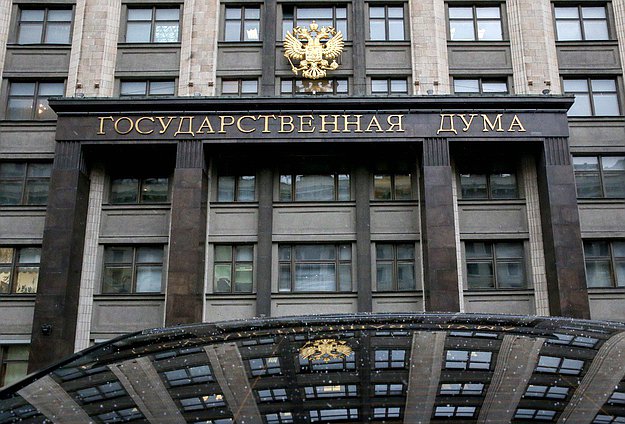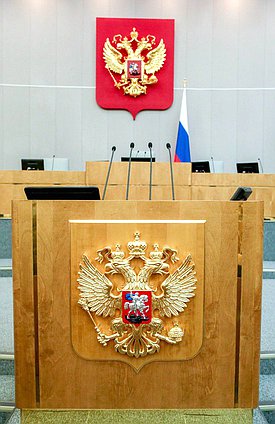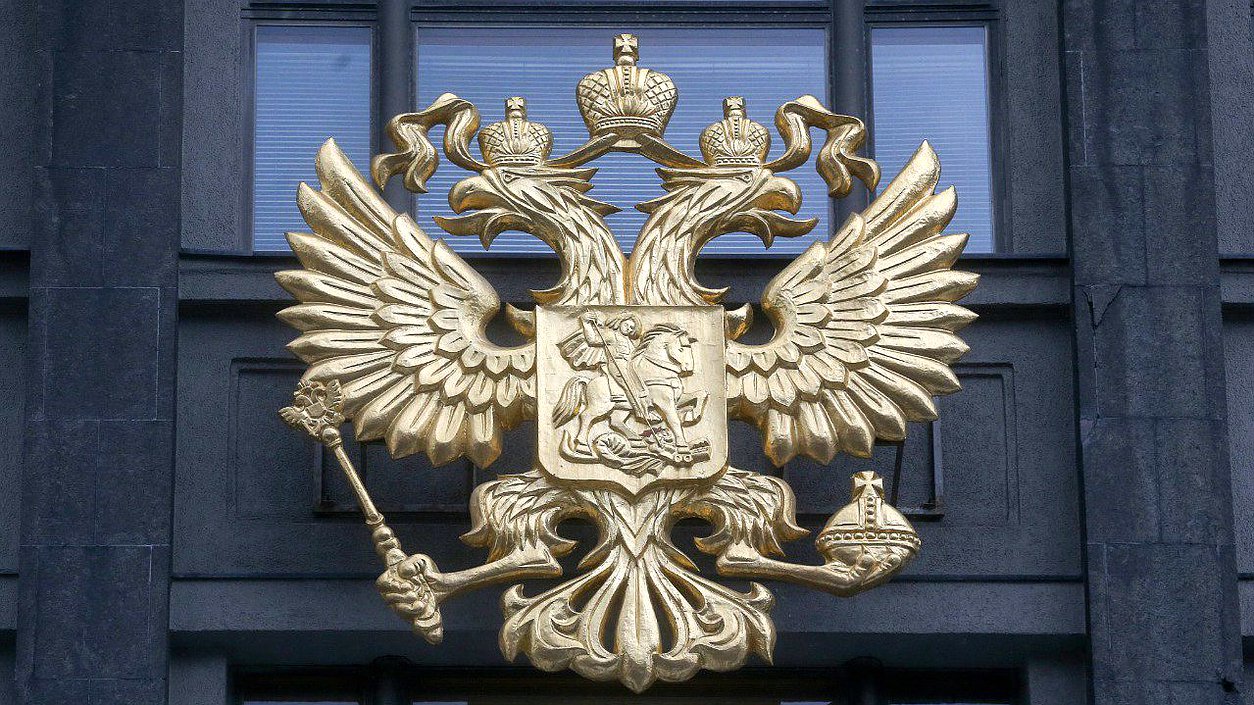
The coat of arms of Russia depicts a golden two-headed eagle on a red background. Above its heads, there are three crowns, symbolizing the sovereignty of the Russian Federation and its regions. The scepter and orb, which the eagle holds in its claws, personify state power and a unified state. On the chest of an eagle, there is a horseman who slays a serpent. This is one of the ancient symbols of the struggle between good and evil and the defense of the Motherland.
For the first time, a two-headed eagle as a state symbol of the Russian state appeared on the state seal of Ivan III in 1497. Being the husband of Sophia Palaiologina, descended from the last Byzantine ruling dynasty, Ivan III decided to use the coat of arms of the Holy Roman Empire, declaring himself the heir to the eastern part of the disintegrating empire — Byzantium.
The coat of arms is represented in many state institutions, including the State Duma.


